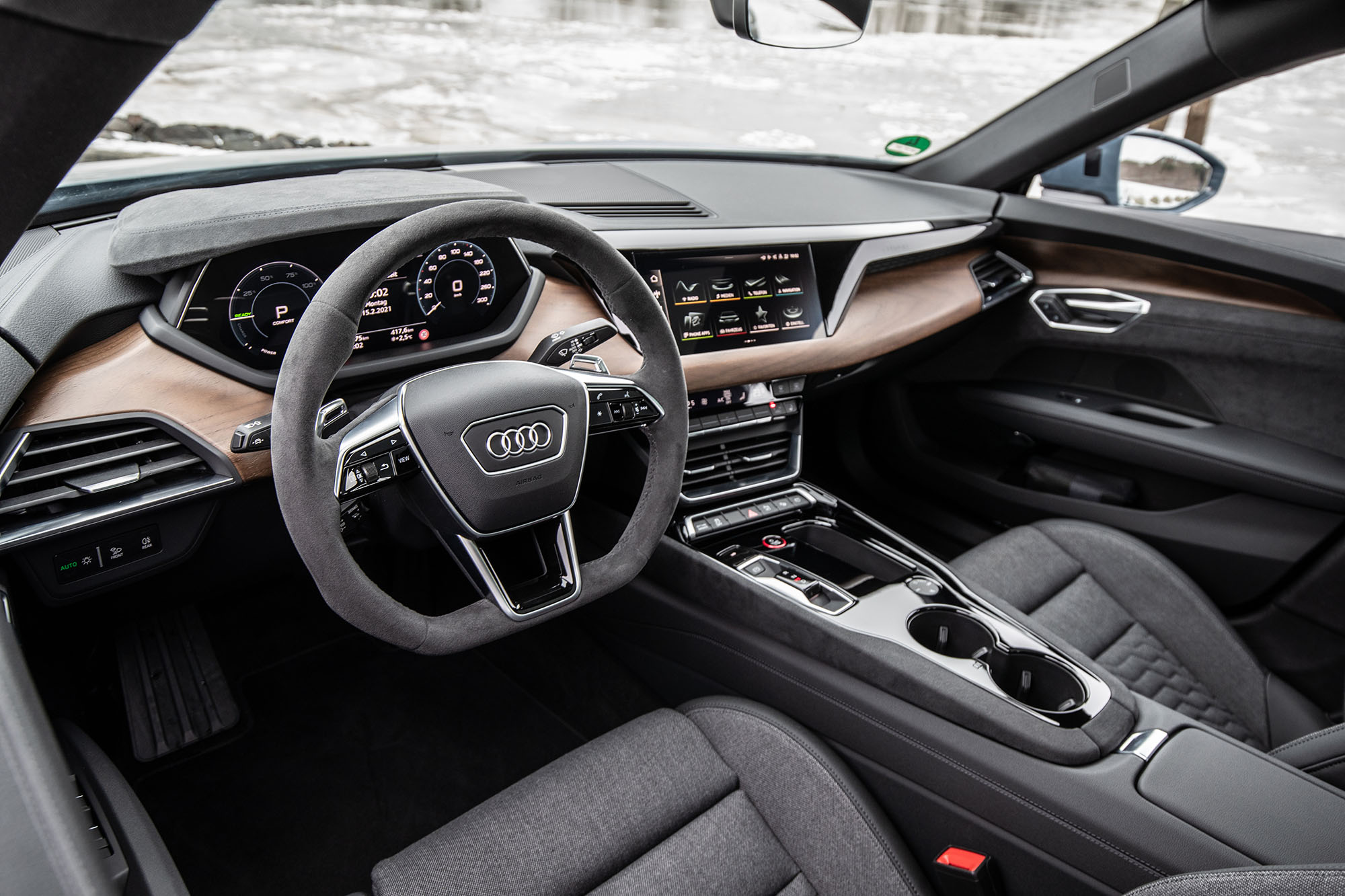What Is a Software-Defined Vehicle?
An industry buzzword and manufacturing imperative, software-defined vehicles are taking over.
 Audi
Audi
A software-defined vehicle is exactly what it sounds like: a vehicle distinguished by its software and electronic systems more than its physical attributes. According to consulting firm Deloitte, software currently accounts for 10% of the cost of building a vehicle. In the next seven years, that figure is expected to climb to 50%. This means, as with your smartphone today, the vehicles of tomorrow will not be defined by their physical properties. They'll be defined by the capabilities of their software.
Connectivity is already paramount for electric vehicles (EVs), which use native apps to locate, navigate to, reserve, and pay for charging. At home, owners can also manage functions such as charging and preconditioning the cabin via their phones. This functionality can help owners take advantage of fluctuating energy prices and helps maximize driving range.
Infotainment Is the Current Proving Ground
The shift to software-defined vehicles is perhaps most apparent in how rapidly infotainment systems have essentially become smartphones embedded in the dashboard. Not long ago, those screens had limited functionality; they could display what song was playing and maybe even driving directions, but not much else.
Today's infotainment systems, however, can mirror our phones, update navigation routes in real time, and run apps independent of our devices. Audi Connect, for example, allows users to stream Amazon Music and Apple Music libraries, check nearby fuel prices, and even find parking — all from behind the wheel.
Audi Connect and similar systems can already communicate with smart-home devices. So the day when your car pulls itself into the garage, turns on your lights, and plays soothing music to welcome you home might be closer than you think.
Connectivity Will Be Key
Software-defined vehicles will rely on an internet connection to enable convenience features, as we're already seeing on hardware-defined vehicles. Unsure if you forgot to lock your doors? Keep forgetting about that maintenance reminder in the instrument cluster? Worried about dinging the car next to yours in a tight parking spot? Smartphone-to-vehicle communication has made these problems of the past.
A number of manufacturers already permit owners to use their phone to unlock or lock and remote-start their cars from anywhere. And data flowing the other way — from the car to the phone — makes it possible to remind the driver about needed service (and easily schedule it) via the connected app.
As for parking, owners of certain vehicles can now leave the driver's seat and, using their phone or key fob, tell the car to park itself in a tight spot.
Communication between vehicles and infrastructure will make automobiles a critical component of the connected world. When will that traffic light change? Are there pedestrians in the crosswalk around this bend? Is there black ice ahead? A fast internet connection and this complex communication network means your future software-defined car will know all of this before you do.
Data Processing Will Need to Improve to Enable Autonomous Driving
Automakers have made major strides in driver-assistance tech and vehicle automation in the past decade. But we're likely still at least a decade away from fully autonomous — or Level 5 — vehicles, and we'll need to see tremendous increases in automotive data-processing capability to get there.
The road to autonomy will be a gradual one, with cars and infrastructure advancing in tandem. A single car's array of sensors and cameras can see only so far. A fleet capable of full autonomy will require cars sending and receiving data to and from numerous sources, including other vehicles.
Over-the-Air Updates Are Vital to the Software-Defined Future
Just as system updates and new apps keep your phone's functionality and capabilities fresh, a software-defined vehicle will be reliant on continuous renewal via over-the-air (OTA) updates. Automakers have already started to embrace this. Ford allows 2024 Mustang owners to download different digital gauge-cluster themes, and Tesla — which introduced the OTA concept to the industry — sometimes makes its vehicles quicker via OTA updates. Furthermore, owners have been able to unlock new Autopilot features the same way.
Such OTA updates will also help autonomy's forward creep, as the average age of a vehicle in the U.S. is currently 12.5 years. If it takes more than a decade for technological advancements to make their way into the majority of the U.S. fleet without OTA updates, autonomous cars would be much further away. But with updatable systems and OTA, that future gets closer.
Written by humans.
Edited by humans.
 Jared Gall
Jared GallJared Gall is a car geek who fell backward into his dream job at an auto magazine. (Remember those?) He's reviewed hundreds of vehicles, raced 500-hp Mercedes-Benzes on the ice in Sweden, and was told by development driver Raffaele de Simone, "It's OK if you spin the car off" Ferrari's test track in Fiorano. He loves nothing more than cars, except maybe his dogs — who are named after trucks.
Related articles
View more related articles